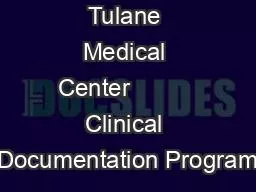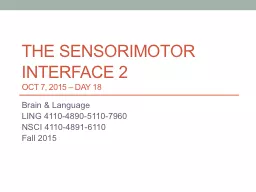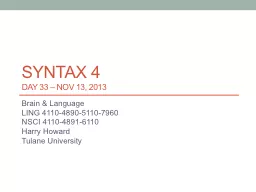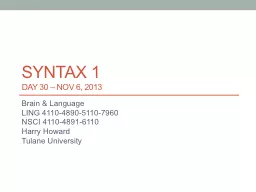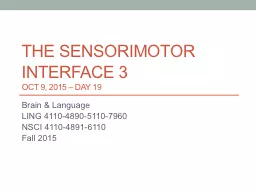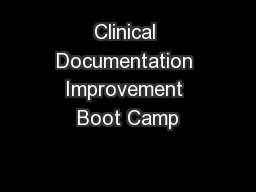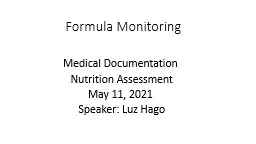PPT-Tulane Medical Center Clinical Documentation Program
Author : ripplas | Published Date : 2020-08-28
Hospitalist Presentation 101810 What is CDI BRIDGING THE GAP Between what CMS Center for Medicare amp Medicaid Services recognizes technical terminology of the
Presentation Embed Code
Download Presentation
Download Presentation The PPT/PDF document "Tulane Medical Center Clinical ..." is the property of its rightful owner. Permission is granted to download and print the materials on this website for personal, non-commercial use only, and to display it on your personal computer provided you do not modify the materials and that you retain all copyright notices contained in the materials. By downloading content from our website, you accept the terms of this agreement.
Tulane Medical Center Clinical Documentation Program: Transcript
Download Rules Of Document
"Tulane Medical Center Clinical Documentation Program"The content belongs to its owner. You may download and print it for personal use, without modification, and keep all copyright notices. By downloading, you agree to these terms.
Related Documents

